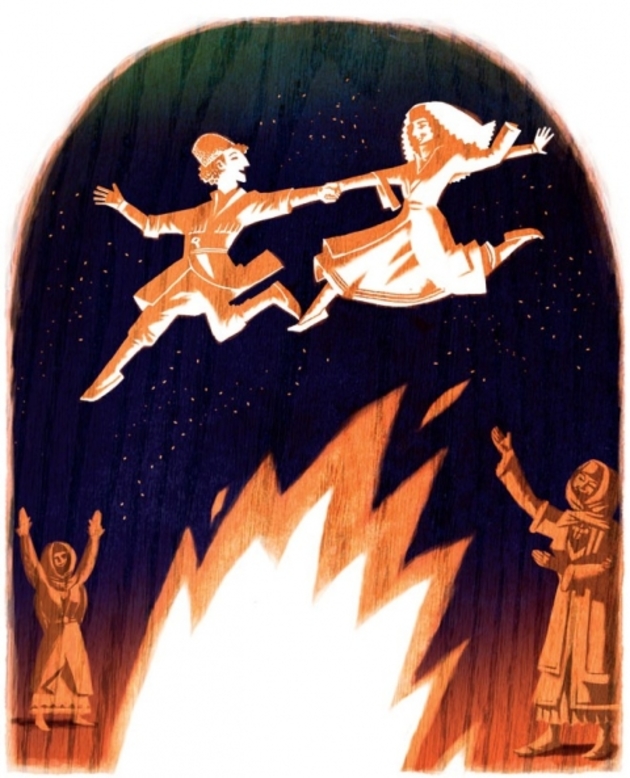Author: Susanna Petrosyan, Yerevan, exclusively for VK
On February 13 Armenian Apostolic Church celebrates Trndez (Candlemas). According to the law of Moses, the woman who gave birth to a boy could not enter the temple for 40 days. Afterwards the woman came to the temple with her baby to bring a sacrifice and get blessing from a priest. Trndez (Candlemas) marks the presentation of Jesus to the temple.
On the eve, the evening mass is followed by Andastan - the ritual of blessing four sides of the world - and the ritual of blessing the candle. According to the ancient tradition that goes back to the pre-Christian times, the candle lights the fire that now symbolizes the saving light of Christ. On the decision of the head of Armenian Church Karekin II this day is considered the day for blessing the newly-weds. This ritual is performed in all the churches after the holiday mass.
Initially Trndez was a pagan celebration. It was called Derendez what in Armenian meant "bundle of hay in front of your house." This was a good wish for the house.. When Armenia adopted Christianity, the name of the holiday changed, and it became known as "Terendez" from "ter" - the owner, the creator. The meaning of it boils down to the fact that "God is with us" and we all turned to God.
The bonfire is the main symbol of the holiday, and the young couples have to jump over it. It was believed that the fire has a purifying power and helps fight the diseases and bad luch. It was said that the newly-weds that in their first Trndez would jump over the bonfire holding their hands will live long and happily. Often their relatives were standing nearby and throuwing wheat grains in the fire. After the newly-weds, the childless women were jumping over the fire in the hope that the flame will help them get pregnant. It could happen only once a year.
The fires were organized in the courtyards of the church and were meant for the entire congregation. The tradition of having a fire in the courtyard of the newlyweds' house dates back to the 19th century. The fire meant wellbeing and was believed to avert the evil. The fires also meants fertility, wealth and good livestock. According to the priest Esai Artenyan, jumping over the fire has no connection to Christianity, but it does not impede salvation. "The Church has never said that one needs to jump over the fire, it is just a popular tradition. Popular believes and church rituals should be distinguished".
According to the ehtnologist Granush Kharatyan, in the USSR the church holidays were repressed. "In the Soviet times Trndez did not have a clear religious components, it was more of a popular custom. It was pushed out from some parts of Armenia, but remained important in the northern and central regions such as Shirak, Talin, Vayots Dzor and Ararat valley populated the descendants of the Armenians who fled from genocide. Now this holiday revived with the stron religious component. Same as before, the church does not intend to push away the popular tradition of bonfires".
Of course, today nobody starts fires in front of the block houses in Yerevan, but the young couples take part in the church ceremonies. It is believed to be a family holiday so it is usually celebrated in the narrow circle of relatives. The parents of the young wive come to visit her and bring presents. Previously, the gifts were brough on a round tray, but now in a special busket full of fruit, candies, corn
and ceeds that are thrown in the fire.
The popularity of Trndez, same as other church holidays dating back for centuries, confirms Armenia's devotion to its history and religion. The customs and revivlas that are now being reborn, together with the faith and the language compose the spiritual axis of the people. Three holidays - Trndez, Vardavar (roses in the water), devoted to the spirit of love and beauty Astkhik, and the day of St. Sarkis who protects the lovers compose the bucquet of the religious holidays for love and marriage. All these three holidays are considered the reflection of the Armenian mentality - no matter where Armenians live, their main priority is family, then good education for children and their home.






